NIKE Survivalism: What is ISPA?
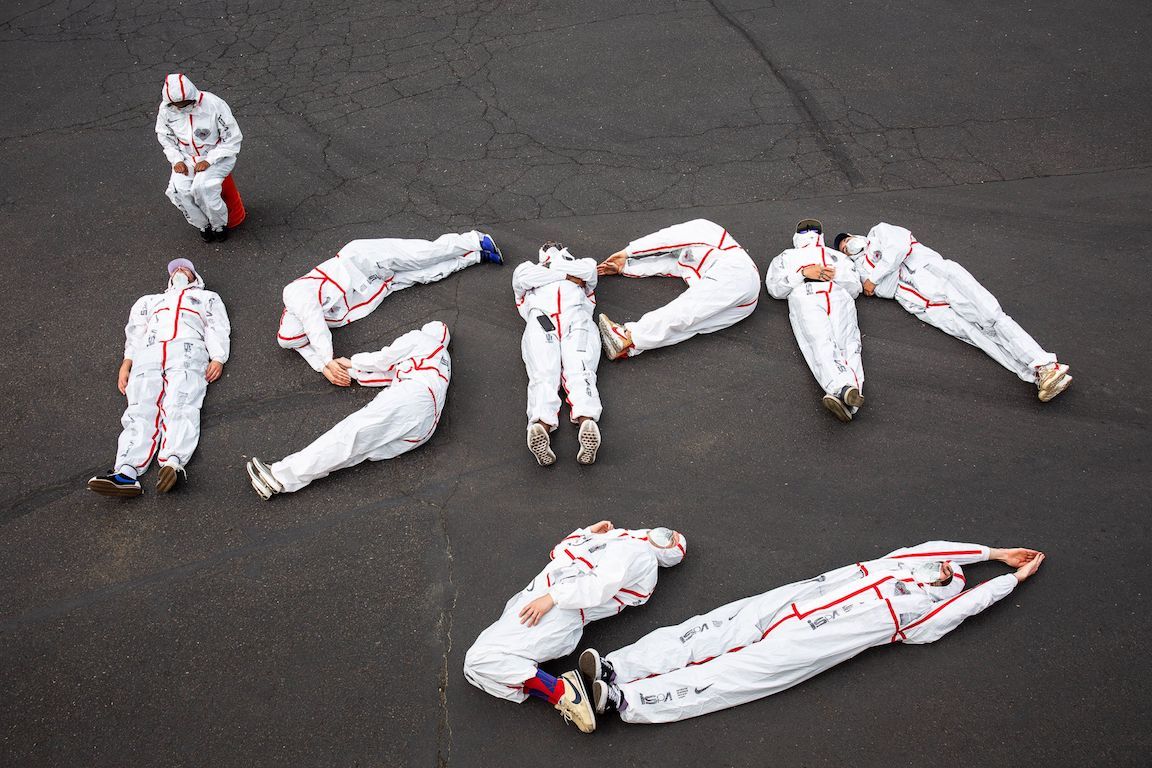
“Improvise,” “Scavenge,” “Protect,” “Adapt”: Nike Sportswear’s latest project is not a product, a collection, or a “revolutionary” new technology, but a four-directional design logic inspired by and geared toward the built environment. ISPA was developed by a global team who have studied everything from punishingly long commutes in global mega-cities to the unpredictable reality of a shifting climate.
It’s a set of principles that has already been transforming the company’s output – see the REACT LW WR Mid ISPA and forthcoming ISPA Air Max 270 – and is equally applicable to apparel as it is to footwear. The details are laid out in a company memo (see below), flipping Nike’s long-standing MO of studying athletes and their competitive needs to consider the many factors that govern life in cities: water, air pollution, transport, weather and urban sprawl. Below, 032c speaks to members of NSW’s global design team, who explain how practice becomes an acronym that in turn becomes product.
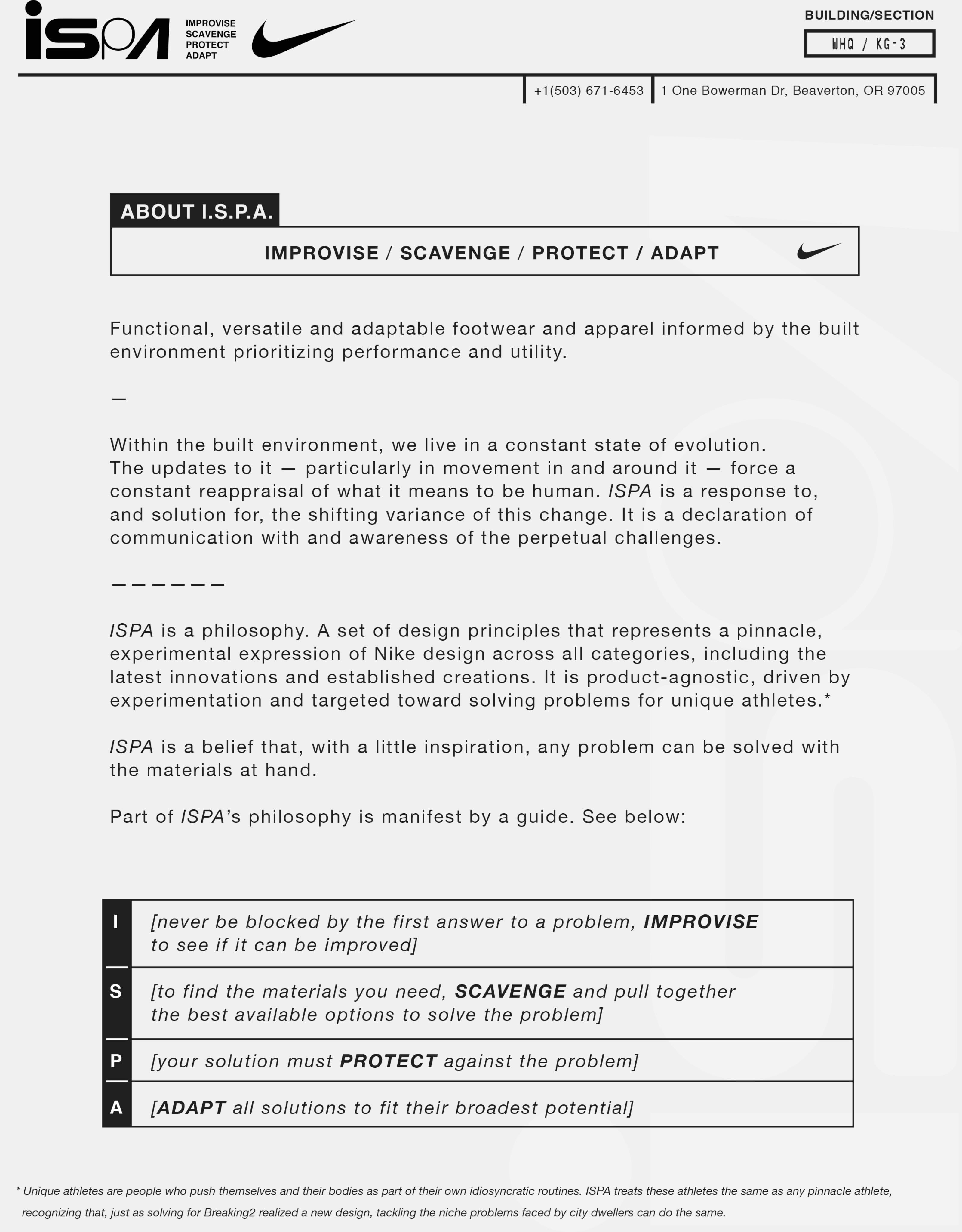
Speakers:
NATE JOBE / USA (Senior Design Director, Fuel Footwear)
DARRYL MATTHEWS / UK (Design Lead, Innovation Fuel Footwear)
NIEK PULLES / NL (Material Designer, Fuel Footwear Innovation Fuel Footwear)
SHAMEES ADEN / UK (Footwear Designer Fuel Footwear Innovation)
ISPA is a response to the challenges of the built environment: an urban terrain. How does this change your considerations compared to designing for particular athletes or sports? Was there a pivotal occurrence or built landscape that was a catalyst for ISPA?
Nate Jobe: Our team focuses primarily on innovation for what you might call regular life — creating products that serve us all day. Like with everything at Nike, we solve for discrete problems shared by athletes, so our first step with ISPA was to identify an athlete. For the project, we chose big city dwellers. We consider them unique athletes. Our research shows that some of them are commuting up to 10 miles a day to work and are exposed to all sorts of environmental elements. Some stay out of the house from 8am to 3am – on their feet! Using the same philosophies and techniques used for performance innovation, we went about addressing their needs.
Niek Pulles: ISPA is not a collection. It’s a design philosophy. We came up with the concept through an ethos: Improvise, Scavenge, Protect, and Adapt. It’s a reaction and visual response to what’s happening in the urban environment, along with the evolution and development of the daily commute. It’s also loosely predicated on the idea of urban survival. Subjects like climate change, air and data pollution, growing cities, and shifts in transportation definitely functioned as an engine for ISPA.
Shamees Aden: Problem-solving for athletes or a sporting event presents a specific set of performance requirements, however you can draw some common threads when problem-solving for the daily commuter. Coupled with the challenges of designing products that actually speak to and solve problems for these “athletes” living in emerging mega cities that are subject to unexpected changes of weather and terrain, was the catalyst for ISPA.
NP: The quote “If you have a body, you are an athlete” [from Nike founder Bill Bowerman] is always in the back of our minds.
Has the built environment become a greater challenge over the years, requiring targeted footwear and gear?
NJ: A lot of our existing Nike shoes already solve problems for everyday life in global big cities. But when we started considering dramatic themes or extremes — unexpected changes of weather, circumstance, environment, and activities — we found a much sharper opportunity to design products that realized clearer intent.
Darryl Matthews: Our landscapes are rapidly changing and so is our mentality – the way we perceive our everyday lives. The art of living is becoming more ad-hoc. We tackle problems at once. We wanted to express this approach by using the materials and components at hand, rather than waiting for the perfect moment or “proper” approach.
NP: It’s interesting to see how the built environment inspires the color and the design team too: looking at new patterns and material constructions, but also looking into more sustainable ways of using and developing materials for more extreme situations.
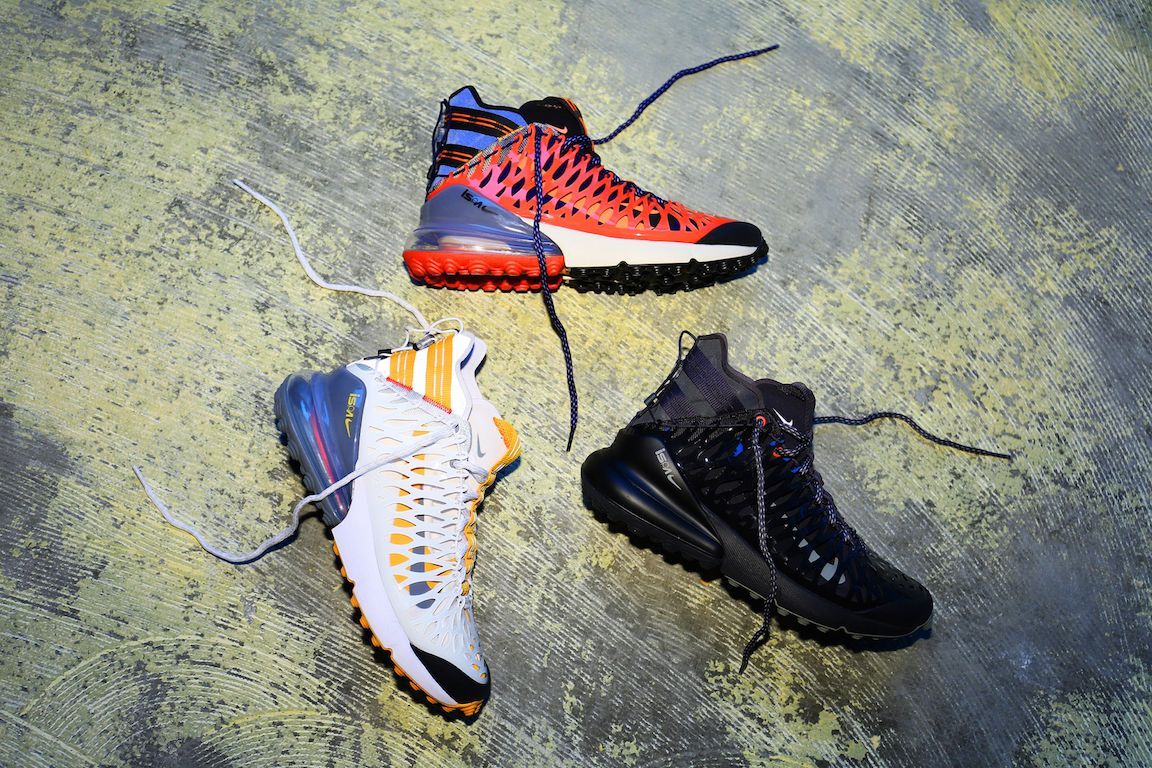
ISPA is an acronym that seems to draw in part from wilderness survival skills – “scavenge,” “protect,” “adapt.” Is this a response to the survivalist culture of the United States, and our collective fears of a near-future urban apocalypse? Is the water-proofing not just a convenience for rainy commutes, but a preface to a response to the extreme weather events facing many of our cities, for example? Is ISPA to a degree about global warming?
DM: The React Element 87 was designed by our team and came out of our research into the ISPA philosophy. It was about discovery. We “improvised” by drilling holes into existing foam structures; we “scavenged” internally, seeking new materials from our innovation kitchen, ultimately using Nike’s new React foam technology; we created “protection” against discomfort and fatigue, and; we “adapted” the shoe’s wearability to everyday urban surfaces.
NP: We are a very international team and have eyes on many places and subjects. It’s not about a collective fear, it’s more about a collective positive attitude that we as a team can bring joy through products that connect to certain things going on in the world. In our research, we looked at a spectrum of urban environmental conditions including disaster planning. We looked at how people solve problems in gnarly situations by scavenging, improvising objects, materials, and techniques to protect themselves, and adapting to their situation. For example, the water-resistant Nike React WR Runner Mids are not only about protecting you on a rainy commute. The design intent is also that it’s easy to bring with you. They’re lightweight and packable, easy to make flat like an envelope. It’s about reacting fast in any type of situation.
SA: As an international collective of designers, we are conscious of the impact environmental changes create in urban and rural centers. Our water-resistant products are adaptable and transitional: stripping back to the essentials and in turn building products with less manufacturing processes and a smaller carbon footprint.
Do you connect the “scavenge” principle in ISPA to one of appropriation? Of Nike’s own designs, but also of other designs or phenomena? As a designer, where do you stand on appropriation, in this age when the possibility of originality is constantly being brought into question?
DM: I wouldn’t say that we have scavenged specific past Nike designs, but have heavily researched our concepts from Nike’s vast DNA. There were design principles and approaches that we had explored in the past but that were not yet ready. By understanding these concepts we are able to scavenge approaches that we can re-appropriate for today.
NP: We are a team. Nike has so much to offer and its power lies in making connections and joining forces, learning from one another, and borrowing each other’s techniques and ideas to help push things forward. We create an opportunity for experimentation in our products, which often brings surprising results. In an age where people constantly question originality because of fastness and muchness, we can surprise them by pulling out historical Nike products, bringing back originality and mixing it with – and through – the modern lens of what innovation means to Nike design.
SA: The “scavenge” principle in ISPA for us is reusing Nike innovations and adapting each to form the best solution for multiple use cases.
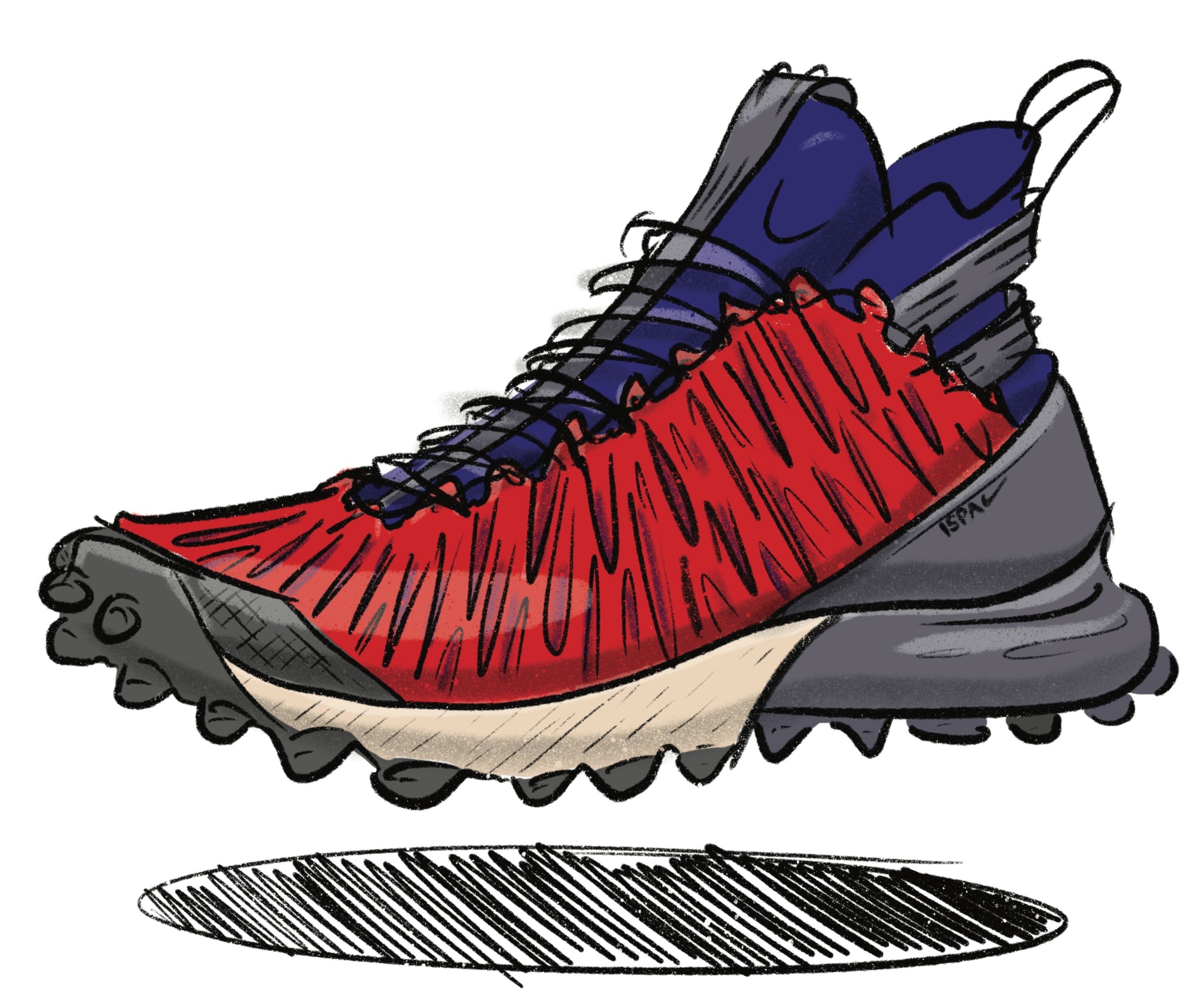
NSW has worked with Comme des Garçons, Virgil Abloh, Supreme . . . Is there a potential for expanding your collaborations through a platform like ISPA? Perhaps with urbanists or architects?
NJ: As a brand, we always set out to create something with our collaborators that we couldn’t create on our own. We’ve spent the last four years recruiting this team from around the world and we have some amazing talent that we want to share. ISPA is a distinct design proposition and we really wanted to be able to have a separate lane to explore innovation with our team alone. Unique athletes and Nike family like Tom Sachs, Isamaya Ffrench, and Samuel Ross were definitely inspirations for this product.
NP: We look a lot at architecture and sculpture design as inspiration points. Studios, universities, designers, architects and artists like Coop Himmelb(l)au, Lee Bul, Bertjan Pot, Kengo Kuma, and many more are on our radar. The fact that many of our designers have an architectural, industrial, social design or art background helps us making the next move.
From a marketing perspective, ISPA is unique in concept, offering up a philosophy to consumers. Can you comment on sharing that internal strategy with the potential wearer of these products – is the consumer you are looking at for this particular line someone particularly driven by the story or philosophy behind a product?
DM: We never set out to directly target a consumer. We thought by targeting a consumer at the start of the process, it would hinder us from looking beyond a preconceived look. So we started with a set of problems instead and have constantly evolved this approach within the construct of the philosophy.
SA: We focus on the use of a product. Our starting point can be the mindset or philosophy from which we start creating products. This allows us to solve problems in unexpected ways and in turn create a new design language.
How does the ISPA project relate to the Nike brand as a whole – is it its intellectual or discursive core? An aggregator?
NJ: It is in Nike’s DNA to be disruptive and create moments in product that are function-led. We have had so many examples, for instance the ZOOMX 4%, Air Rift, Air Max Kukini, ACG Pocket Knife, City Knife II, and ACG Kommuter, all of which drove functionality to new places. By creating an ethos for designing products we intentionally strayed from a commercial response and focused on making products that felt more honest in intent.
DM: I like the idea of being an intellectual aggregator, but we never set out to be that way. There is always a better way to do, make, or design something. At the end of the day we are selling a philosophy. As a collective team, we truly believe in how we have approached these concepts through unique cultural commentary.
NP: We are an aggregator for the brand. We gather information from every corner of the company and with that language go our own way, staying dedicated to Nike’s DNA and the future of innovation. As a team, we are proud of what we are doing with ISPA and think it adds value to the brand. We might sometimes explore methods beyond tried and true Nike processes, but it’s always with braveness, consideration and respect to the brand, it’s designers and approach to our future.
Credits
Related Content
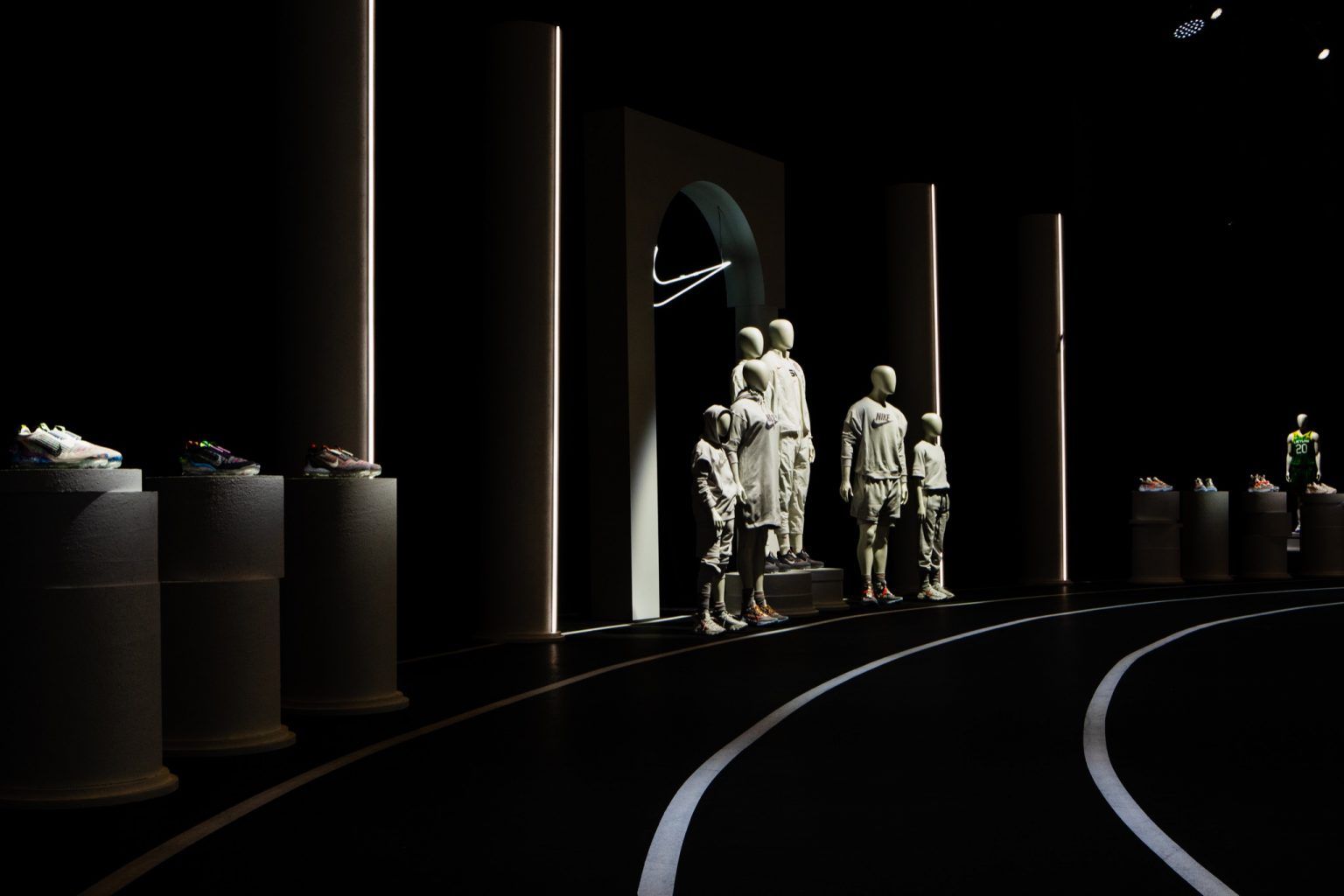
NIKE in 2020: Strengths, Weaknesses, Opportunities, Threats
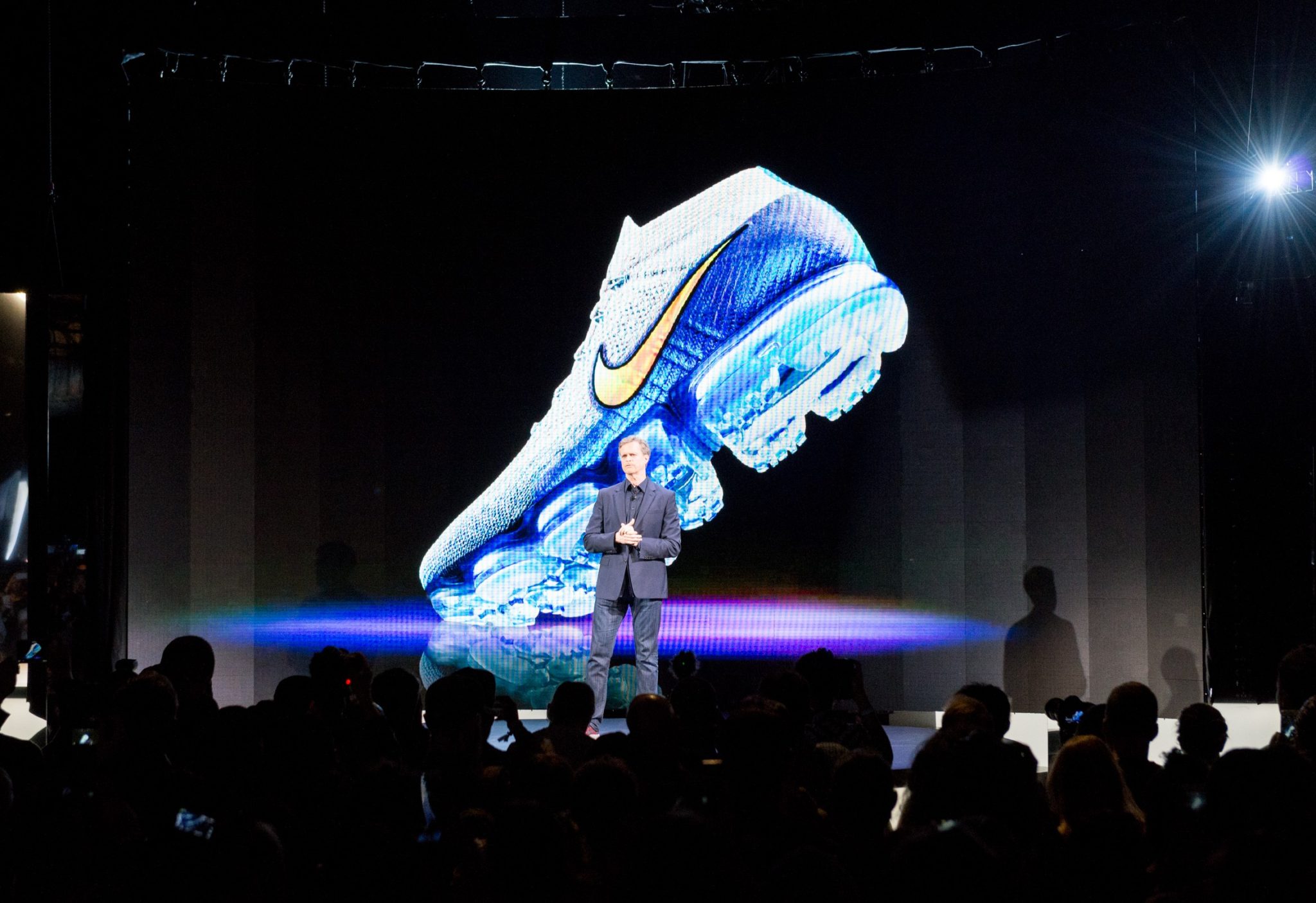
Nike in 2016 – Strengths, Weaknesses, Opportunities, Threats
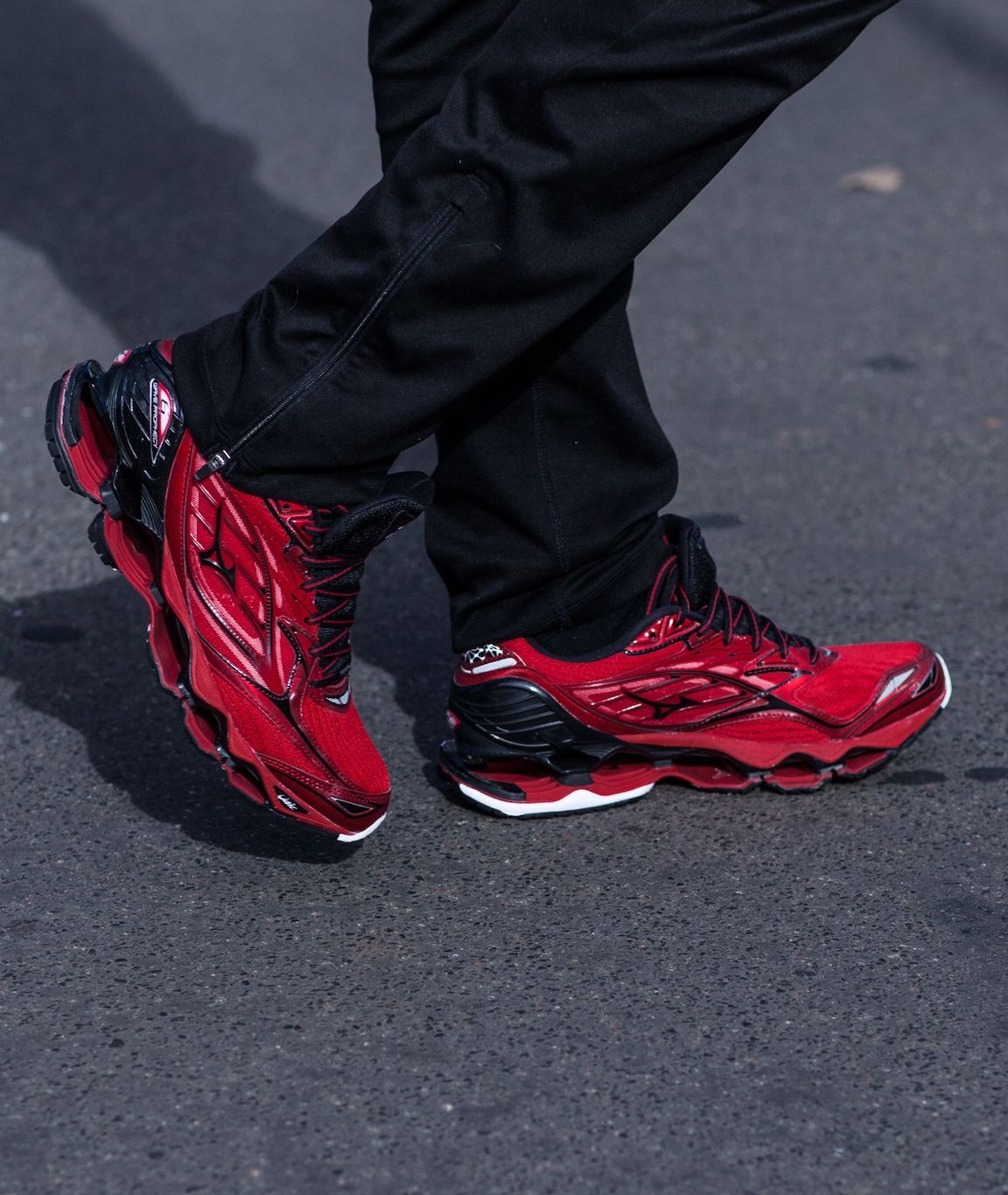
Extremist Footwear: Examining the Spectrum of 2017’s Minimal and Maximal Running Shoes
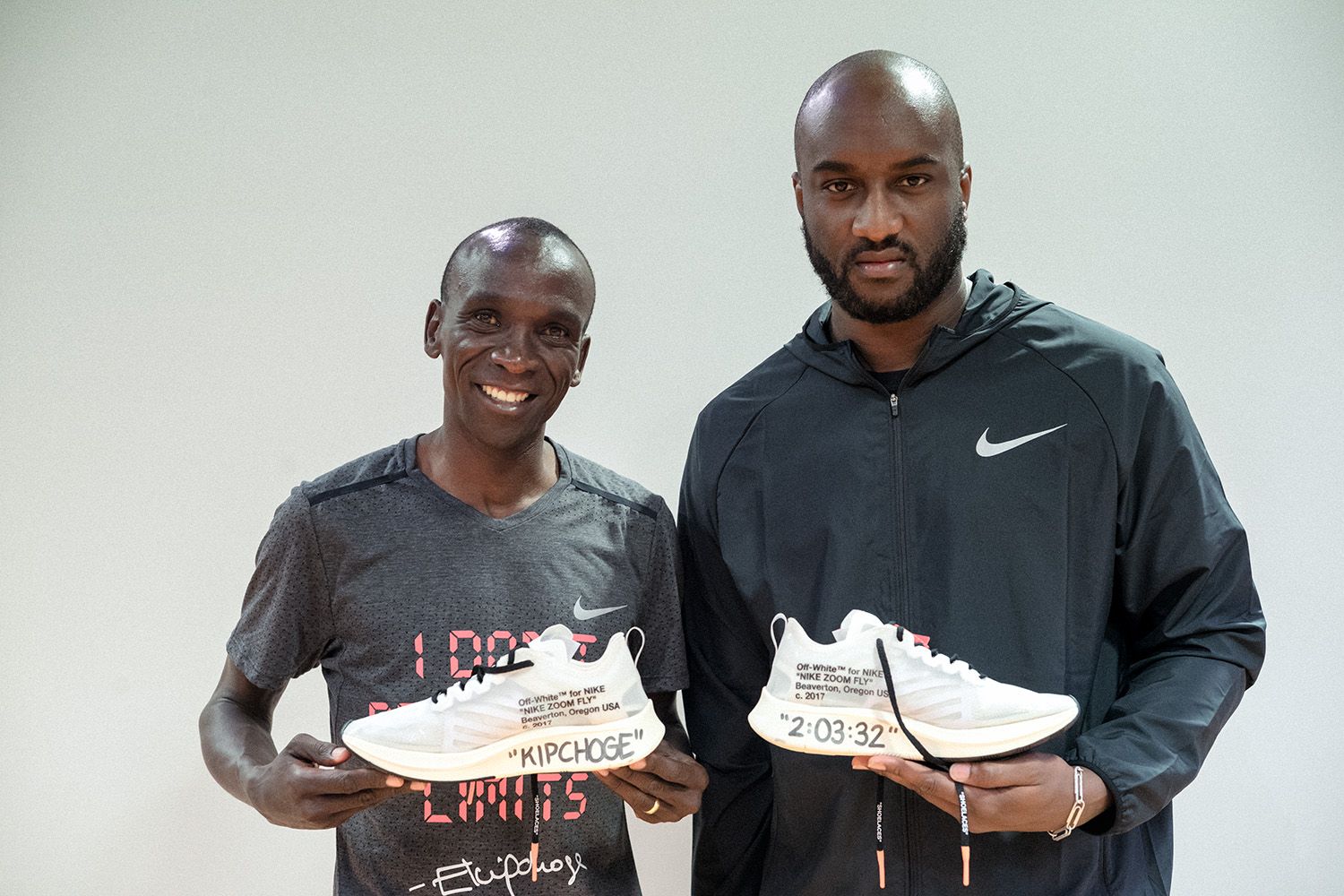
2017: 2:03:32, 2018: 2:01:39. We Salute Marathon World Record Breaker ELIUD KIPCHOGE
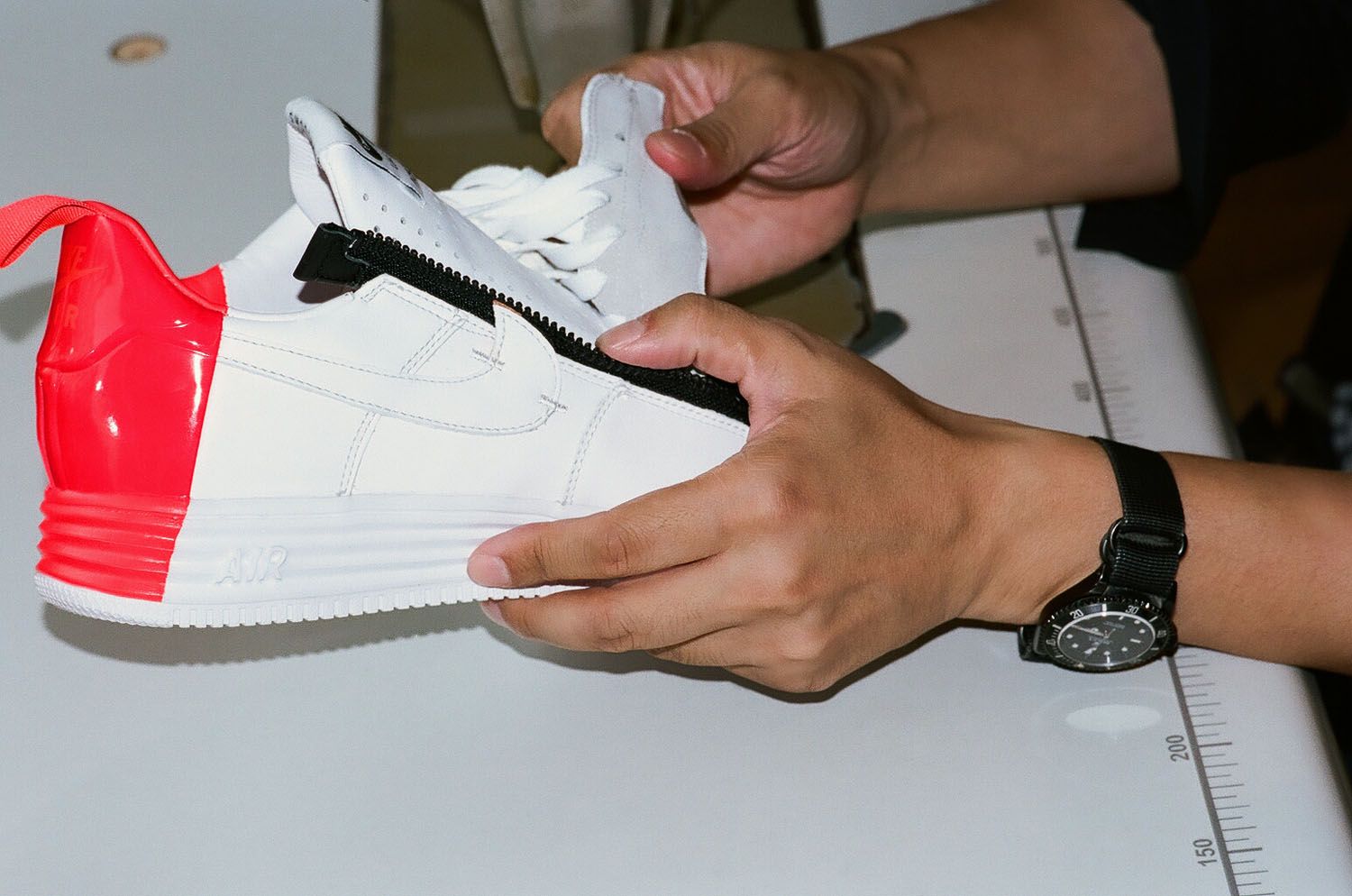
ACRONYM’s Functional Intervention on the NIKE Air Force One